There are insects that we easily see when we look down while walking down the street. They are ants; they are found not only in streets, but also near tree barks, in playgrounds, and unfortunately in houses, too. Some people take them lightly, because they are small insects that are easily spotted all around us, but little do they know that ants have been living on earth from time immemorial—since the Cretaceous, the last period of the Mesozoic era.
While callipogon relictus and dung beetles—distant relatives of ants—are endangered1, ants have become so prosperous that the total number of ants on earth is estimated to be ten quadrillion. There are about 15,000 species of ants, with about 5,000 species recorded and many species still uncovered. Therefore, they must not be looked down upon because they are small. Biologists, including Edward Osborne, say without hesitation, “Ants are conquerors of Earth,” “Ants are rulers of Earth.”
1. The Ministry of Environment of Korea, 2018 List of Endangered Species.
What is the secret hidden how ants have flourished so greatly? Now let’s take a journey into the world of ants, which we may have paid no attention to.
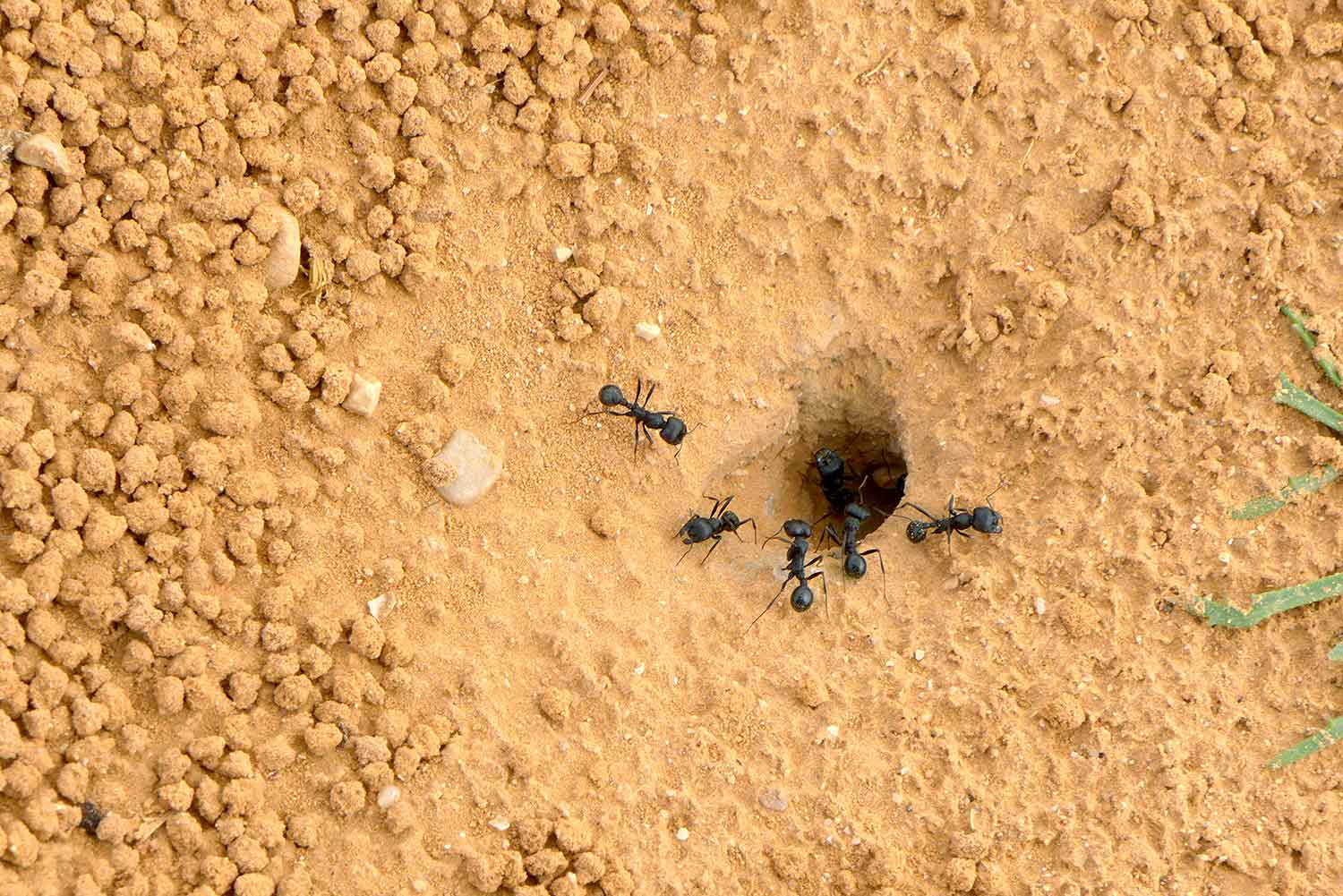
Division of Labor among Ants
Let’s suppose you are an ant in the kingdom of ants. You are enjoying your peaceful day when suddenly an enemy breaks in and starts destroying things in your house. What action would you have to take in this situation? It would depend on what kind of ant you are. It is because all ants have certain duties entrusted to them. The reason why ants have flourished so greatly is thanks to the tremendous power gained through the division of labor among them.
The most noticeable characteristic in the society of ants is a division of labor. Only the queen ants, the reproductive females, lay eggs, and worker ants, the working females, share all the other necessary work. Princess ants, future queens, spend their time reserving energy for nuptial flight2 just like male ants.
2. A phase during which a queen bee or a queen ant flies up together with male honeybees or ants and mate under certain weather conditions.
This division of labor is so unique; some work all their lives, and some only eat until they leave their house. Although it seems unfair, it is very economical for their survival in the fierce ecological world. As for other animals that give birth to their young, take care of them, and do feeding individually, it takes them a long time to complete one generation, and it is very risky. On the contrary, ants optimize productivity by handling a vast range of tasks quickly at each level. In addition, since numerous ants carry out the same type of work simultaneously, even if problems occur somewhere, they do not have much impact on the whole operation. It is just like a production line in a factory. It’s amazing that such wisdom comes from those small insects.
Just as there are many things to be taken care of even for one family, there is a tremendous amount of work for the worker ants to do in the kingdom of ants. How do worker ants divide up their workload? It varies according to species, but normally they do different types of work as they get older. When they are very young, they run different kinds of errands, staying near the queen, but when they grow a little older, they take care of eggs or larvae. When they reach youth, they function as nanny ants, taking care of big larvae and pupae in earnest. In adulthood, they continue to be faithful as worker ants, bringing food from outside the tunnel or digging a new tunnel. There are also army ants with big bodies and developed heads and chins. They are trustworthy soldiers that protect the kingdom and guard it from the enemies, as their name suggests.
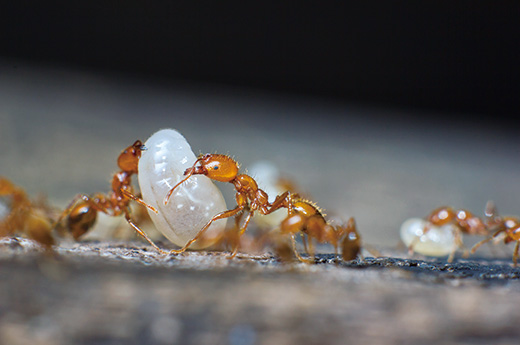
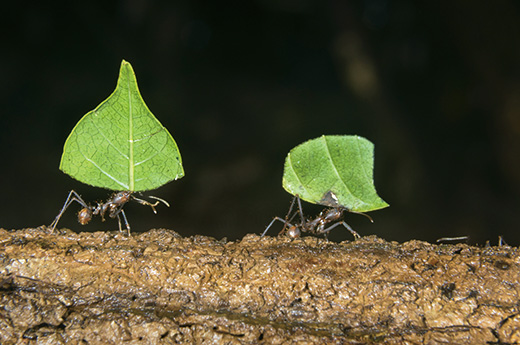
Leafcutter ants, which started farming far before humans, are a perfect example of the division of labor. Leafcutter worker ants which collect leaves and grow fungus are divided into four classes from the day they are hatched. The biggest ones are army ants, and the smallest ones are black garden ants which take care of larvae and fungus. Medium-sized leafcutter ants cut and move leaves needed for farming, and ants smaller than them are guards, staying beside the medium-sized ants and guarding them from tachinid flies. The fact itself that every one of them is faithful to the role they are given at birth is amazing, and the power they exhibit that way is even more amazing. The average amount of dirt that a leafcutter ant colony digs is 20m³, equivalent to 44tons. Compared to humans, it can be likened to building the Great Wall of China. It is truly, incredibly great power, considering their small size.
The division of labor among ants shines its light especially in times of crisis. Let’s go back to the supposed situation. If you were an army ant, you would attack the invader, and if you were a nanny, you would evacuate the larvae to somewhere safe. You could be a worker ant that would repair the damages on the house. In the society of ants, being faithful to the task they’ve been given is a way to become one, and a way of survival to protect the members of the colony.
Sacrifice for the Colony
Most worker ants live faithfully for their colony, but there are also ants that even go beyond faithfulness and display beautiful sacrifice with their special duties.
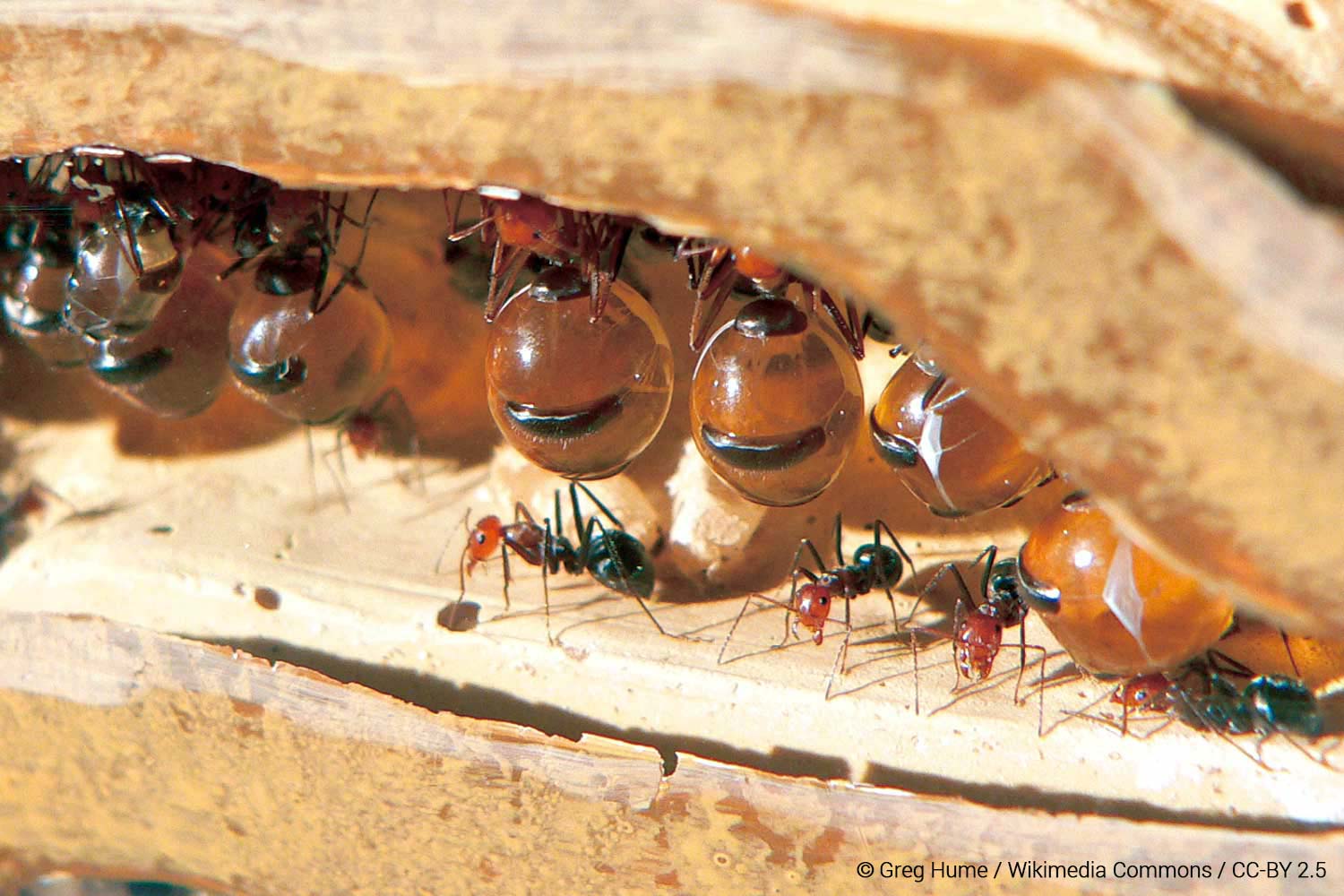
They are honeypot ants that are found in arid areas of the southwestern United States and Australia. This special name which reminds us of a popular animated character seems to be derived from the role of some worker ants. They store honey, which their fellow ants bring, in their stomachs, and hang upside down from the ceilings. Their diligent fellow worker ants constantly bring honey, filling up their stomaches, which end up becoming multiple times bigger than their heads. While they are waiting with their swollen bodies that make it almost impossible for them to move, someone finally comes and taps their antennas. It is a “hunger” signal from a fellow ant. Then they step down temporarily and give the hungry ant some of the honey they’ve been storing. To survive in the desert where there is a lack of food and water for a long time, they serve their colony by using their own bodies as living storage.
Turtle ants that make holes in big trees and live inside them have evolved to completely fend off invaders that look for every chance to attack the kingdom. Turtle ant soldiers have wide and flat heads which they use to block the entrance to the ant tunnel and guard all day. If the entrance is too big, several ants stand there together with their heads blocking it. When an ant from the same colony taps their heads with their antenna, they open the door, but they never open it to ants from another colony. They stand on the same spot every single day. Their faithfulness is so amazing.
Carpenter ants typically found in the tropical forests in Malaysia display extreme sacrifice. There are ant species that use venom when attacked, and carpenter ants are one of those species. Ants of other species inject venom in their enemies by stinging them. However, carpenter ants use this unique method of self-sacrifice called “autothysis.” They rupture their own abdomens, releasing a sticky fluid laced with toxins on their attackers, and they die shortly thereafter.
Worker Ants’ Devotion
The first step to establishing a strong kingdom of ants is to maintain a close relationship between the queen ant and the first workers. As the queen ant becomes alone after the nuptial flight, she neither goes outside nor eats anything in order to raise her young fast and safely. The first mature worker ant needs to collect food diligently and feed the queen ant. If the first worker ant dies, the queen will eventually die from continuous spawning and loss of energy. Then the rest of the worker ants cannot survive much longer. Therefore, the first worker ant and the queen are in an inseparable relationship.
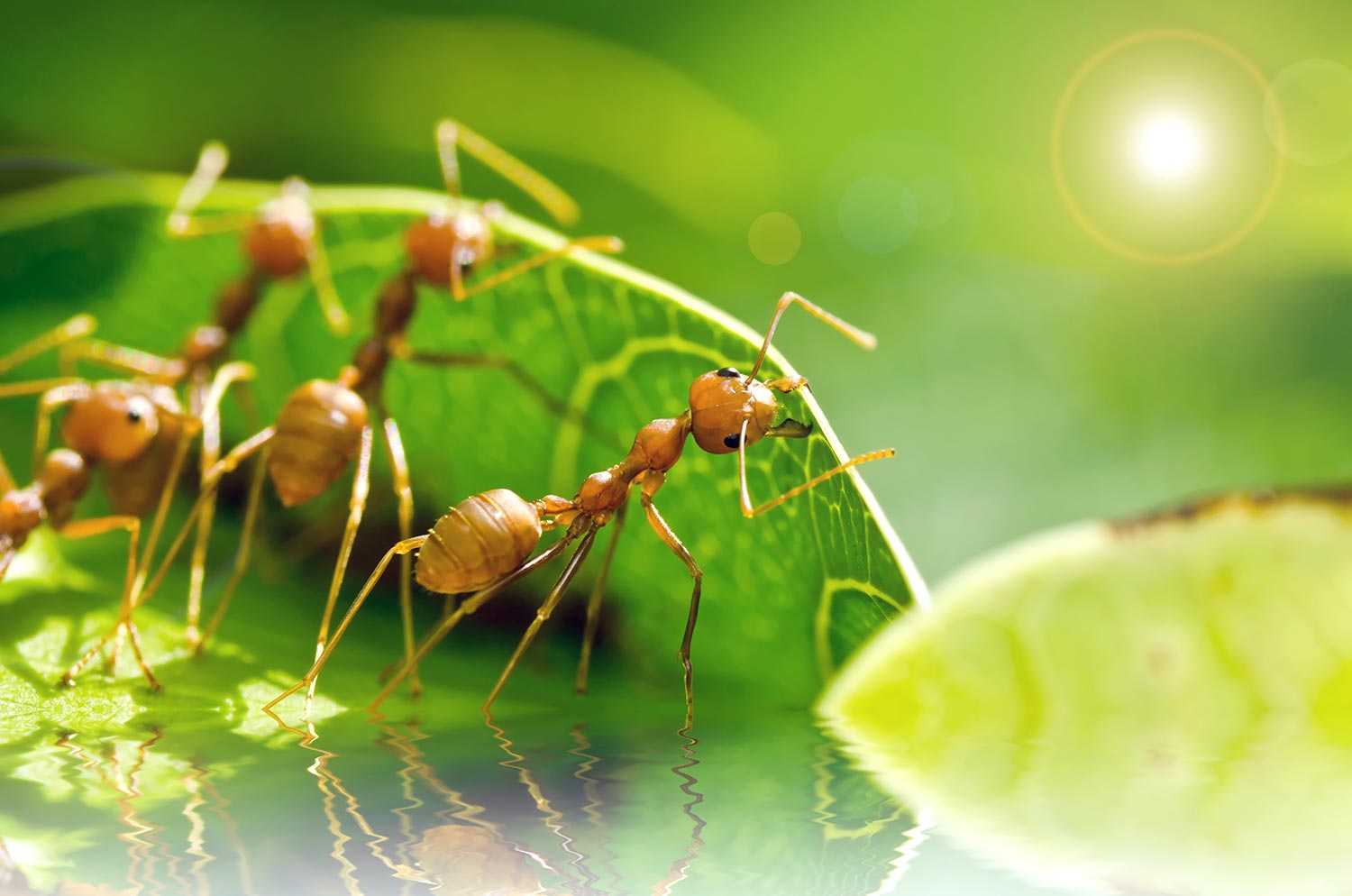
It’s not only the queen ant that needs help from the worker ants, but all other ants need help from their older sisters until they are fully grown up. Larvae that have just hatched out of the eggs have no legs and they cannot move by themselves. So, older workers bring food and feed their younger sisters that are squirming and whining. Also, when molting into adults, they cannot break open the cocoons by themselves, and they need help from outside. The mature worker ants take care of the workers of the next generation. This is how the worker bees, who dedicate their lives to their colony, love their younger sisters.
In Aesop’s fable titled The Ant and the Grasshopper, ants are portrayed as diligent insects that store food for the future, instead of eating, relaxing in the shade, and enjoying free time. In fact, ants need to store enough food in summer, because they do not hibernate during winter. According the fable, it is natural for the ants to find food, but in reality, it is not an easy task for worker ants to leave their nest and find food. Pogonomyrmex californicus, which are harvester ants in the Western United States, often have to fight other ants when they leave their nest in search of food. In the fierce battle to obtain good food, about 6% of the ants die per hour. Many other worker ants also die while trying to find food, either by being attacked by predators or getting lost.
Except some special cases due to the characteristics of the species, all the worker ants are the queen ant’s daughters. They give up on having their own offspring and only work, helping their mother and younger siblings, throughout their lives. This is probably why they are called “worker ants.” Animals make desperate efforts to leave genes according to their biological instinct. However, the devotion of the worker ants is beyond instinct, compared to other animals.
The Queen Ant Plays a Key Role in the Kingdom of Ants
The supreme ruler in the kingdom of ants is the queen ant. The queen can be easily misunderstood as a dictator that only gives orders because of the name “queen,” but this is not quite true when you look into their life.
A princess ant’s attempt to become a queen ant is followed by deaths of thousands of ants. The princess ant and male ants, which have lived, only waiting for the time for reproduction, either crawl or fly to find mates. However, predators such as birds and dragonflies aim to capture the moment when their prey flies around in group. Sadly, most ants are either eaten or die by falling into the water during this process.
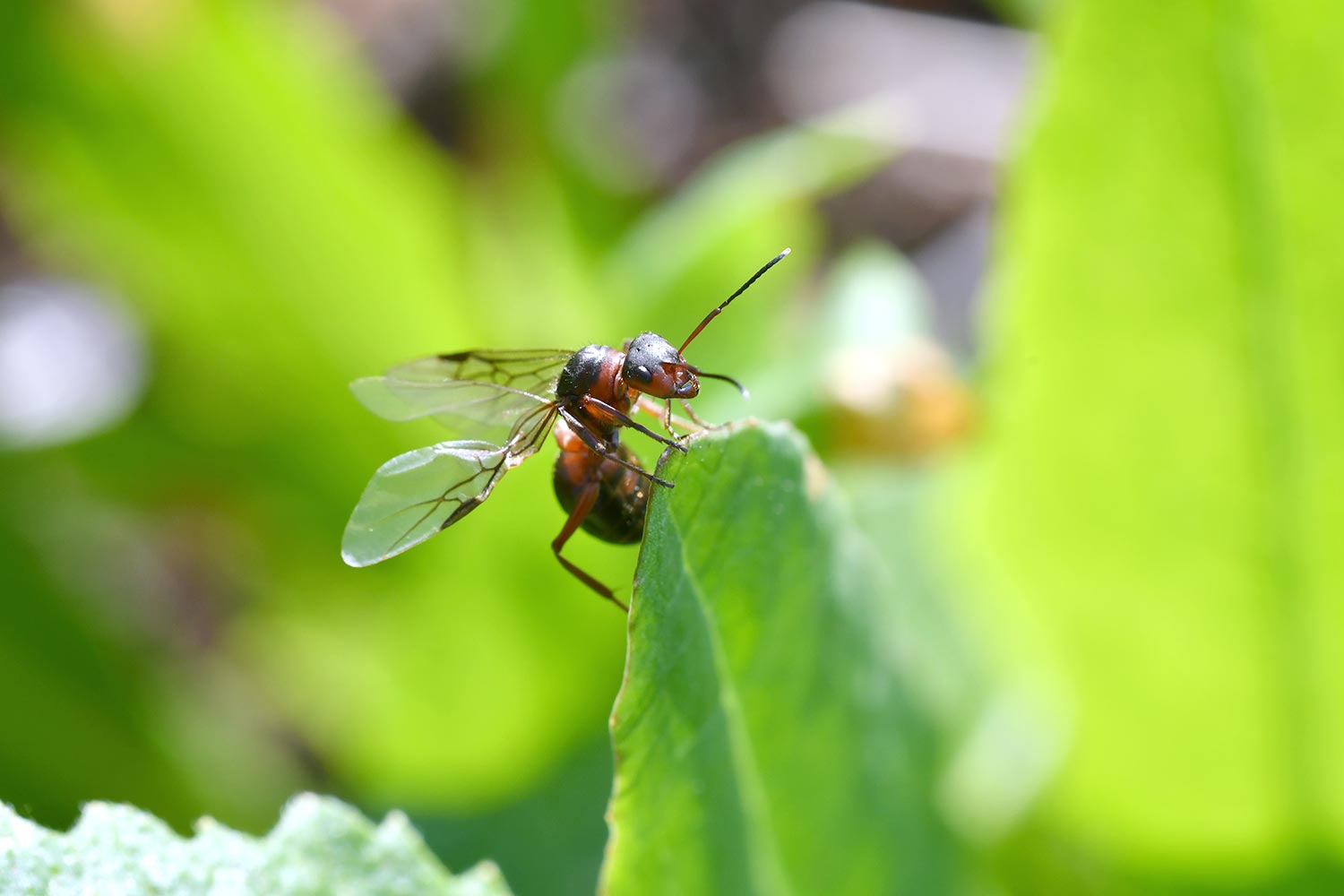
Even after they survive from nuptial flight by flying fast with their stored energy and become a new queen ant, they still have the next huddle waiting for them. It is to find the right place to settle without being caught by predators. However, there are not many places where ants can live whether it be a forest with old trees, a city street, or a parking lot in an apartment complex. Even if the queen ants manage to land, many of them accidentally land in a place that is already occupied, and die even before laying any eggs. It varies by species, but only about one out of 500 to 10,000 ants becomes a queen ant that successfully forms her own kingdom.
After managing to find a place to settle, the queen ant first takes off her wings, using her middle and rear legs. Since she doesn’t have any worker ants yet and it is dangerous for her to go out to seek food, she makes nourishment by breaking down her wing muscles, which she doesn’t need anymore, or her abdominal fatty tissue. This way, she feeds her young with secretion that she herself makes from the salivary glands. Her life has completely changed from the time when she became a princess ant, when she used to do nothing but only eat. As the number of worker ants grows gradually, the queen ant becomes free from childcare. However, by this time she is completely exhausted as she has not eaten anything for quite some time. From this time, she carries out her duty of reproduction during her entire life, eating food that the worker ants bring her.
At a glance, it looks like the queen ant lives a comfortable life, being served by other ants, but it’s rather pathetic that she has to lay eggs all her life. Although she is called the queen, she is not like kings that dominate the people. She is the mother that dedicates her life to building and maintaining a nest and raising her young.
The kingdoms of ants, which are formed like that, exist until the queen dies and the last worker ant finishes its work. Meanwhile, numerous male ants and princess ants are born, and compete for survival. If they succeed, they can build one more amazing kingdom of ants.
Humans and all other living creatures that have survived in the earth’s ecosystem are social animals living with their highly developed system. The society of ants resembles that of humans in many aspects, such as the organized division of labor and fierce battles for survival. Shouldn’t we humans learn from the teamwork and sacrifice that have always accompanied the species of ants since the Mesozoic era?
“Go to the ant, you sluggard; consider its ways and be wise! It has no commander, no overseer or ruler, yet it stores its provisions in summer and gathers its food at harvest.” Pro 6:6–8
- Reference
- Choi Jae-cheon, 『Discovery of the Empire of Ants』, Science Books, 1999
- Bert Hölldobler, Edward O. Wilson, 『Journey to the Ants』, Belknap Press, 1994
- Nam Sahng-ho, 「World of Ants, a Miniature of Human Society」, 『Donga Science』 Ninth issue, 1994